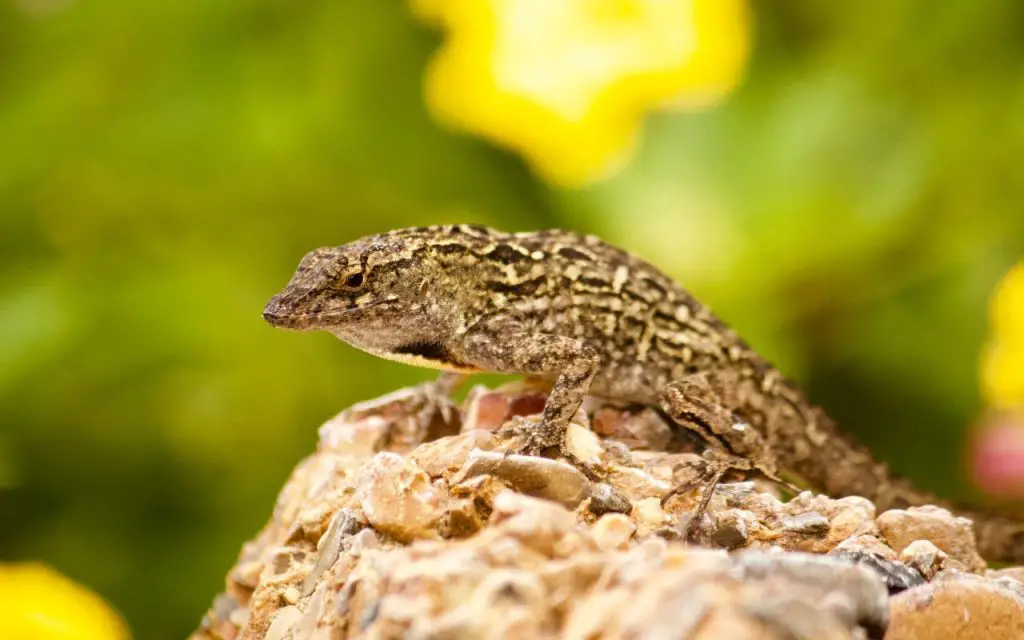Are Brown Anoles invasive? In some areas of the United States that have a similar climate to their homeland they have indeed spread and become invasive…
Last updated on February 1st, 2023 at 09:23 am
Brown anoles (Anolis sagrei), are a species of lizard that is indigenous to the Bahamas and Cuba. However, they have spread to several regions of the US, where they are regarded as invasive. This is because they outcompete and replace the native Green Anoles, and disrupt the balance of predator and prey populations.
They are notorious for their adaptability and rapid reproduction, making them difficult to regulate. As a result, they are a major problem for the conservation of natural ecosystems and biodiversity.
Are brown anoles invasive to Florida?
Brown Anoles are endemic to Cuba and the Bahamas but have been imported to numerous states in the US, including Florida and Texas.
Because they overtake and drive out local species like Green Anoles, they are regarded as invasive in these places.
Brown lizards are another name for these invasive brown anoles, which are often referred to as Cuban brown anoles. They are notoriously tough to manage because of their high levels of adaptability and ability to thrive in a range of situations.
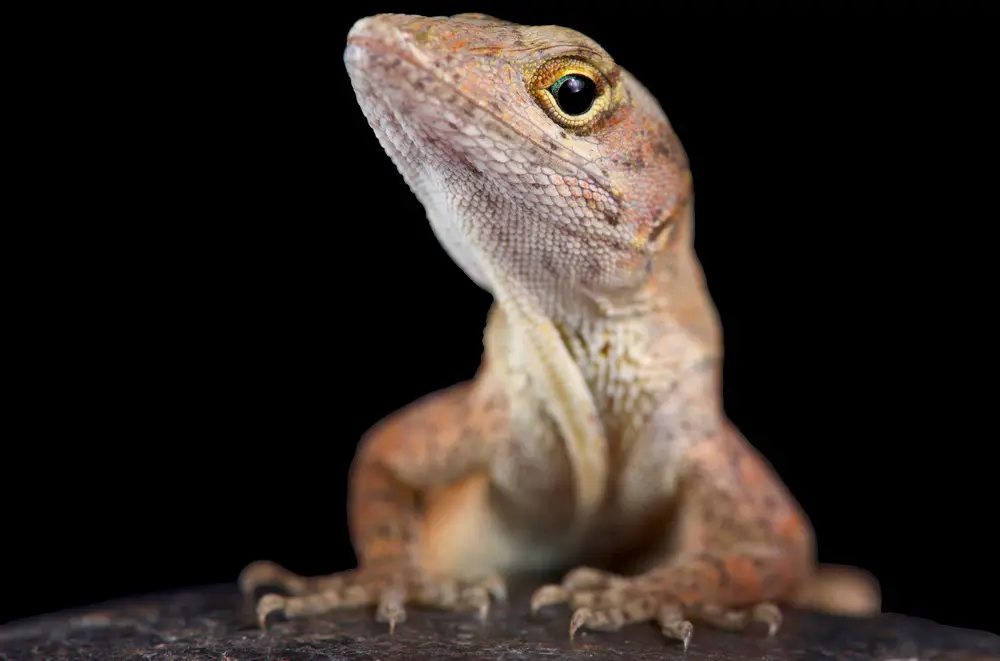
Are brown or green anoles invasive?
Green anoles, also known as Anolis carolinensis, are endemic to the southeastern United States and are not invasive there. Brown anoles, on the other hand, are considered invasive in locations outside of their natural range.
Green Anoles are often referred to as American green lizards or American Chameleons. They are not as common as brown anoles and are considered to be less adaptive than those animals.
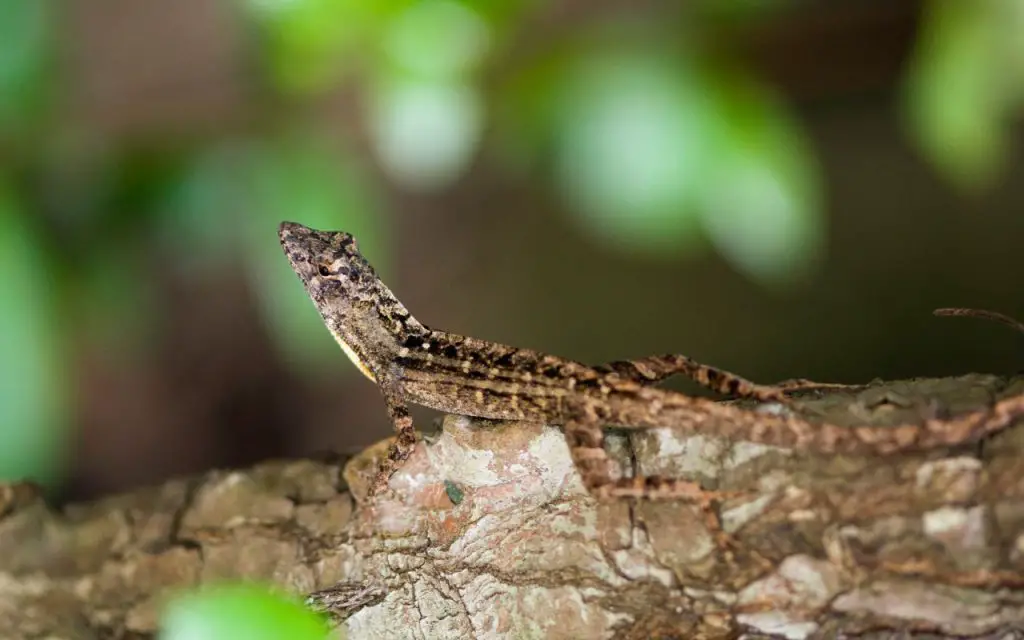
Do brown anoles eat green anoles?
As predators, brown anoles will consume the young of other lizards, even green anoles. This may lead to the replacement of native green anoles with brown anoles.
One of the causes that brown anoles are seen as invasive is because it is well-known that green anoles are declining everywhere where the former have been introduced.
Why is the brown anole invasive?
Because it may overtake native species for food and habitat, the brown anole is regarded as invasive. Additionally, because of its tremendous adaptability, it can survive in a wide range of conditions.
They also have a high percentage of survival and fast reproduction. Female brown anoles may deposit up to 4 batches of eggs each year and breed all year.
Because of their rapid reproduction rate, they can swiftly colonize new regions and outcompete local species. Their population reaches a high density, and this is instrumental in pushing out Green Anoles.
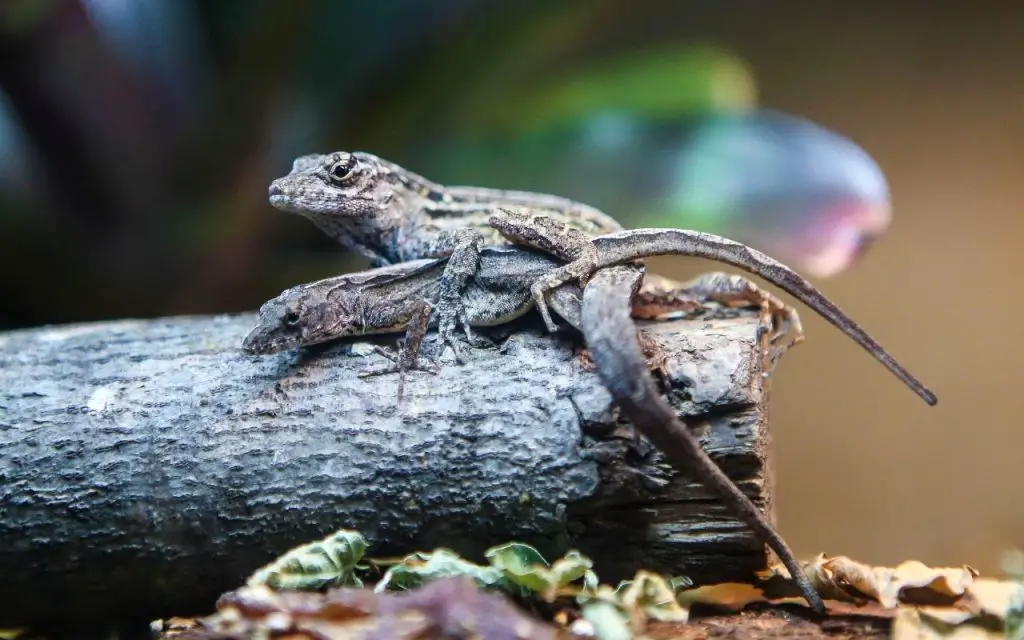
Brown anole lifespan
In the wild, brown anoles only survive for two to three years, although they can live for up to four years in captivity. They are well-recognized for being resilient lizards that can endure a variety of conditions.
How do brown anoles affect the ecosystem?
Brown anoles harm the ecosystem by displacing local species and altering the balance of prey and predator populations. They can potentially spread disease to local lizards, too.
Brown Anoles may carry invasive parasites or bacterial diseases that adversely affect native lizard species. They are also believed to influence the local plant density by devouring the insects that eat it. Believe it or not, increased plant density can have negative effects because it can obscure patches terrestrial habitat, or reduce micro-habitat diversity.
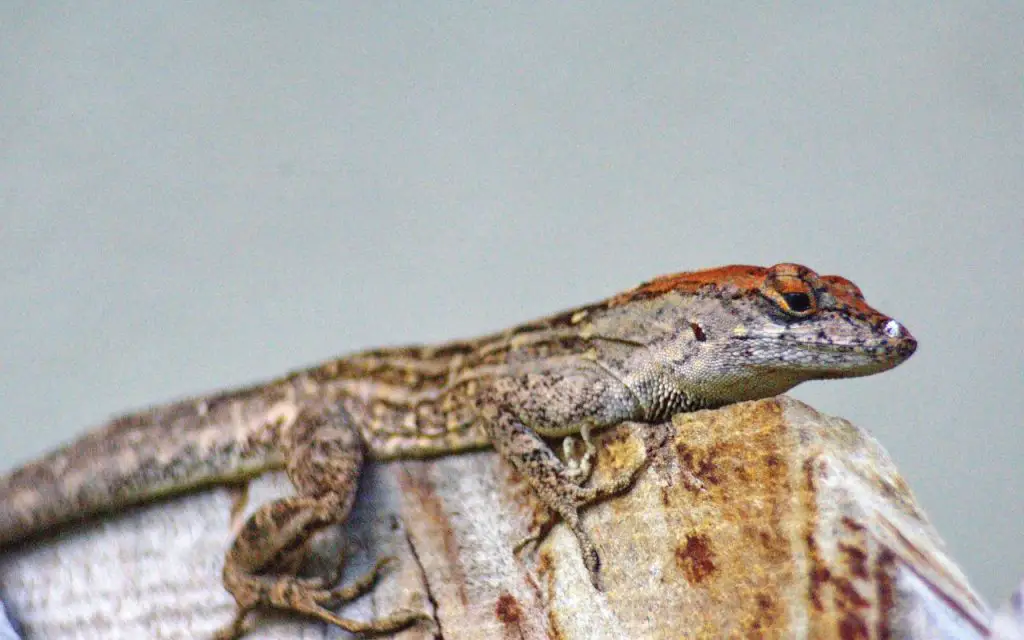
Brown Anole habitat
Urban regions, wooded areas, and wetlands are just a few of the places where brown anoles can be found. They are extremely flexible and may prosper in a variety of situations.
They are reported to be able to live in temperatures ranging from below zero to over 100 degrees Fahrenheit.
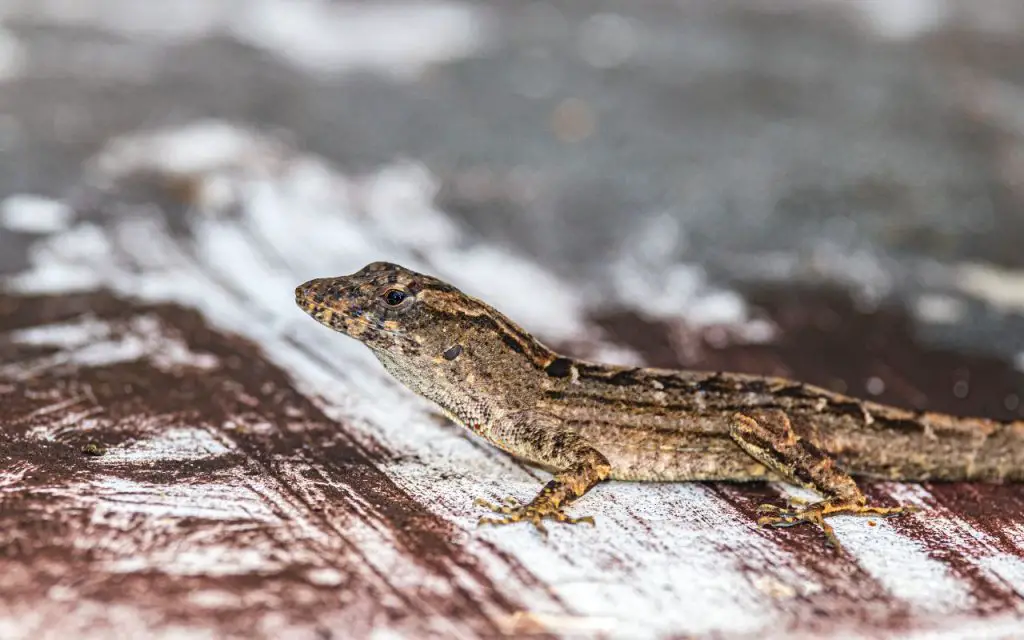
How do you get rid of brown anole lizards?
Although eradicating brown anoles can be difficult, there are several approaches that can be taken, including trapping, repellents, and habitat alteration. It’s crucial to remember that killing lizards may be against the law in some areas.
Trapping is the most successful technique for managing brown anoles, although it is time-consuming and costly. Repellents and habitat alteration are less effective, but they can still be utilized as a part of an integrated pest control plan.
Removal of possible sources of food, such as insects, and reduction of areas of shelter, such as thick grass or waste heaps, are examples of habitat change. Repellents can be natural predators, such as snakes or birds, or chemical repellents that simulate the scent of predators.
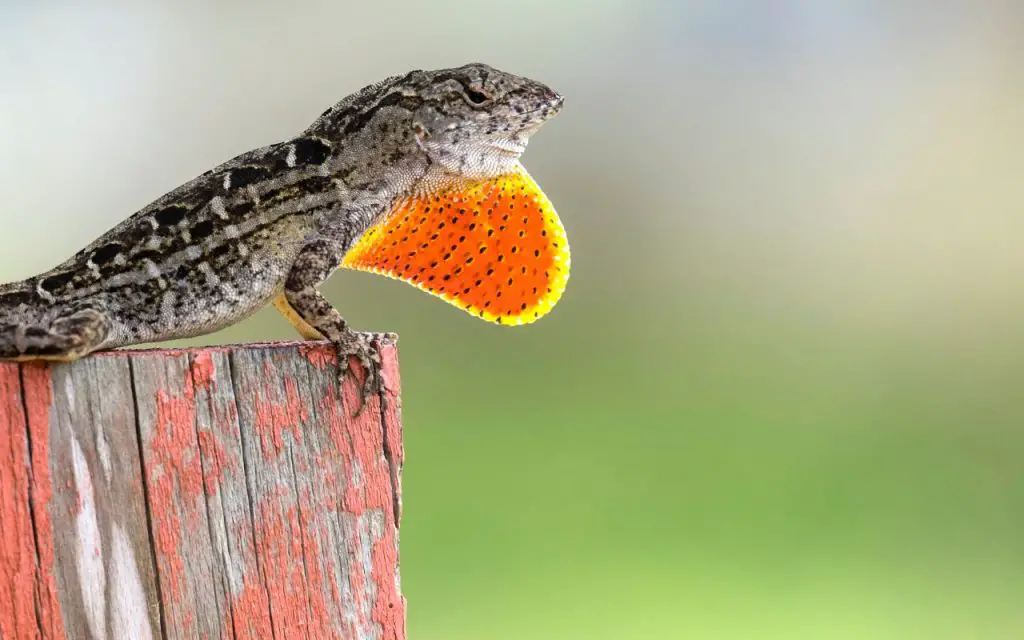
Are brown anoles invasive to Texas?
In Texas, brown anoles are regarded as invasive since they are known to supplant the state’s native green anoles. Many other southern states, including Louisiana, Georgia, and South Carolina, are also known to harbor them.
Though a lot of outside of the US think of deserts when we hear Texas, the eastern half of the state is actually very humid – making it perfect for Brown Anoles.
What is the lifespan of a brown anole?
A brown anole may live for two to three years in the wild and up to five years in captivity. They are well-recognized for being resilient lizards that can endure a range of circumstances.
In injury like a lost eye or lost leg, for example, wouldn’t be enough to stop a Brown Anole from feeding and reproducing.
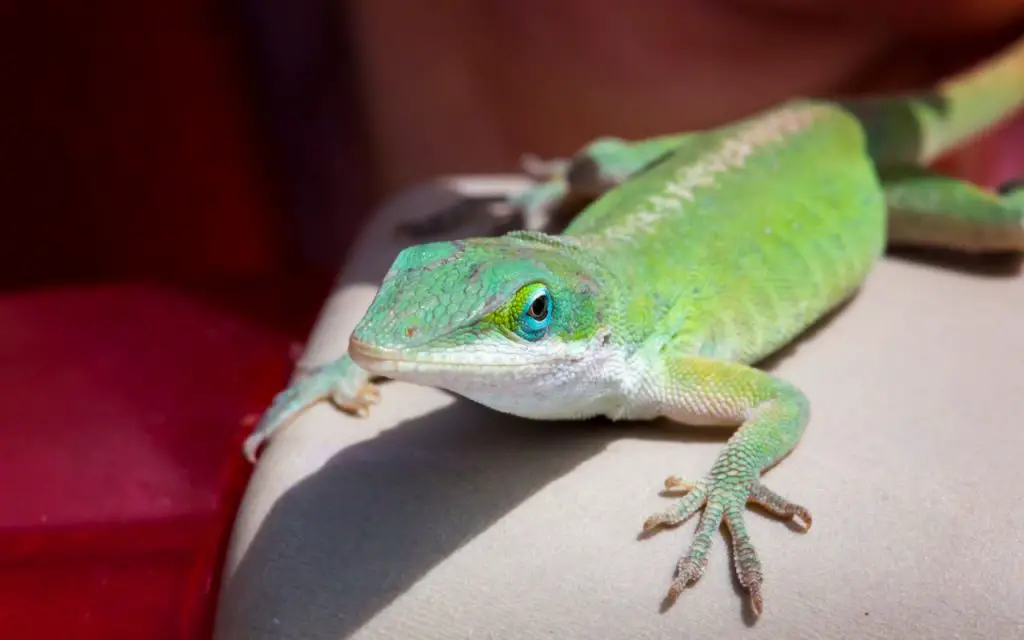
FAQ relating to “Are brown anoles invasive?”
Are brown anoles harmful?
Brown Anoles are not thought to be dangerous to people. They are modest in size and don’t have venomous bites. It is crucial to remember, however, that they can be hostile towards other anoles, especially during mating season, and may bite if touched.
It is also crucial to remember that they are wild creatures and may have parasites or diseases that may be spread to other pets or humans if not handled and cared for correctly. Overall, they are harmful where they have become invasive, because they are outcompeting native species.
Are brown anoles friendly?
Brown anoles are not often thought to be sociable pets. They are wild creatures with the potential to bite if touched, though it doesn’t actually hurt you.
They may also be shy and anxious around humans, making it difficult to engage with them. Furthermore, they have special requirements for their habitat, nutrition, and temperature, which require detailed husbandry which includes UV lighting.
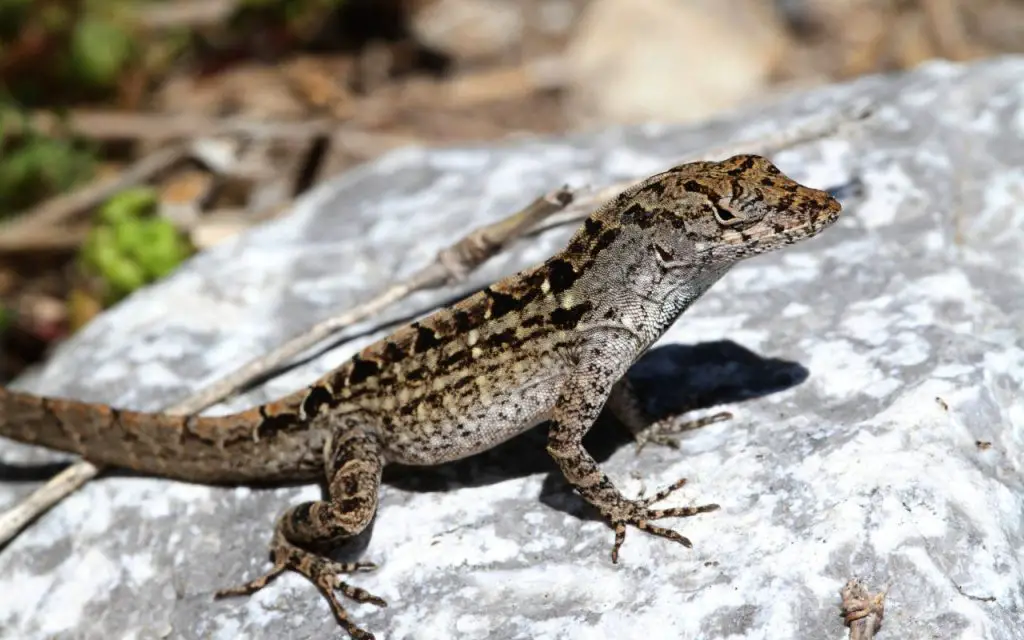
Are Anoles toxic to dogs?
Dogs cannot normally be harmed by anoles. However, if mishandled, they may bite, which will probably annoy the dog more than anything else.
If your dogs come upon an anole, you must keep an eye on them. Some dogs enjoy chasing and munching on lizards, or anything else that moves, really. Occasionally, it is possible for dogs to catch parasitic worms in this way, though this hasn’t been documented from them eating Brown Anoles yet.
Do brown anoles make noise?
Brown anoles are typically peaceful creatures. They do not make any audible vocal sounds to humans. They may make soft buzzing or clicking sounds, although these are usually inaudible to humans.
Because they are diurnal and live in high population density, all of their communication with each other tends to be through visual signals. They head-bob, display their dewlaps, and do pushups to maintain their territory. They have no need for vocalisations of the type that nocturnal geckos make.
Key Takeaways
- Invading brown anoles displace native species like green anoles in the United States, notably in Florida and Texas.
- Due to their opportunistic eating habits, brown anoles will consume other lizards, even green anoles.
- Because of their adaptability and rapid reproductive rate, brown anoles are regarded as invasive.
- Brown anoles have a lifetime of 2-3 years in the wild and a maximum of four in captivity.
- Brown anoles can have a negative influence on the ecology by replacing native species and affecting prey and predator populations.
- The southeastern region of the United States is home to green anoles, which are not regarded as invasive.

